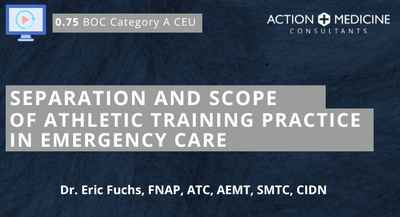AI Chat Bot
Separation and Scope of Athletic Training Practice in Emergency Care › Learning Material
Presentation (Video)
Updated Apr 7, 2024
Copyright © 2025 Action Medicine Consultants, LLC
___MESSAGE___
___MESSAGE___


